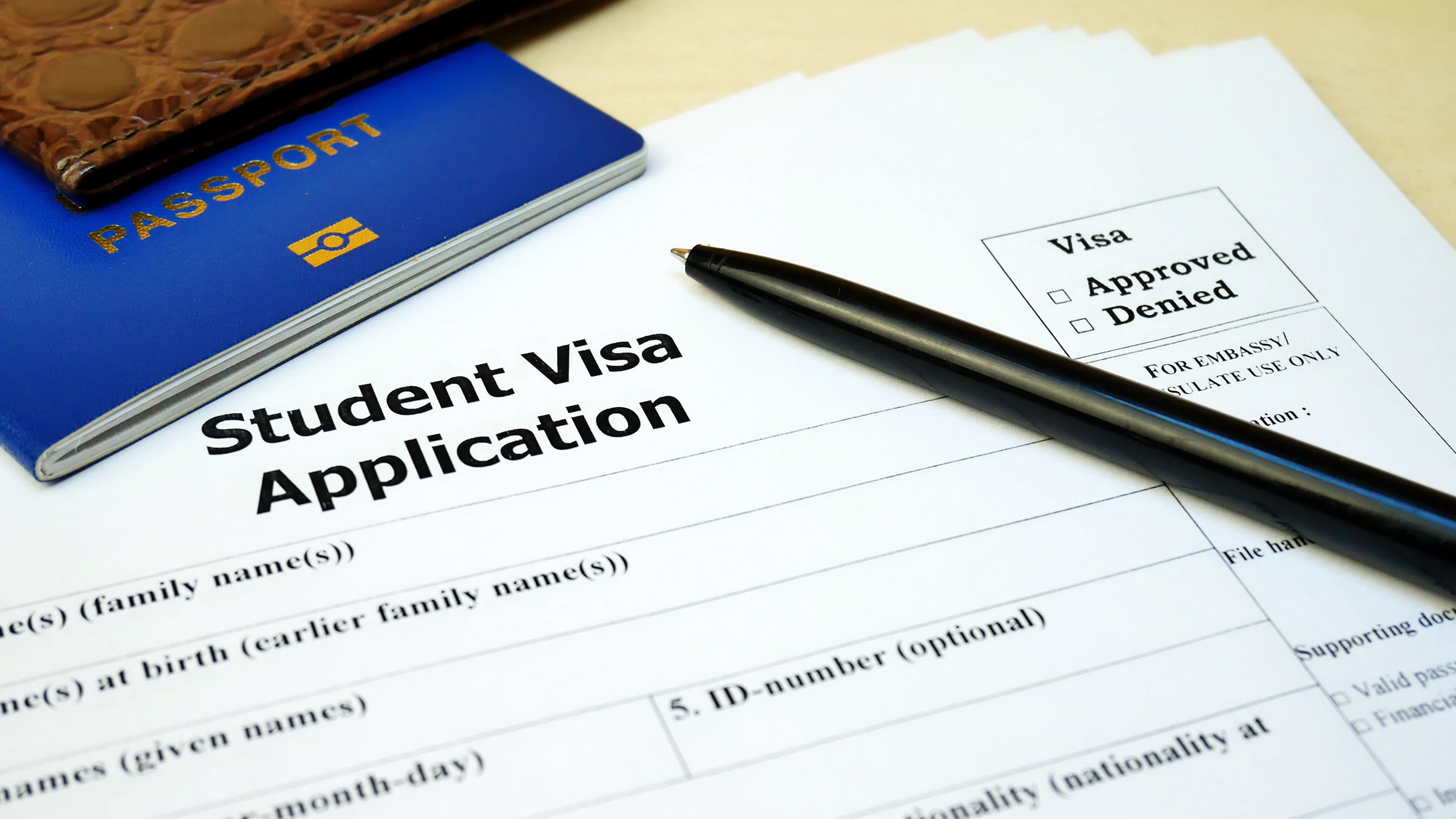Student Visas - F & M
Two visa types for foreign students wishing to attend
an educational institution in the United States.

THE F-1 VISA
In order to apply for a student visa, you are required to be accepted by an educational school/institution that is certified by the Student and Exchange Visitor Program (SEVP). Students who wish to travel to the U.S. may also benefit from the J Visa.
The first step is to apply to an approved school or institution in the U.S., and after they accept your enrollment, you will be then registered for the Student and Exchange Visitor Information System (SEVIS) and pay the required fee. The approved school will issue you a Form I-20. After you receive the Form I-20 you may apply at a U.S. Embassy or Consulate for a student (F or M) visa. You must present the Form I-20 to the consular officer when you attend your visa interview. If your spouse and, or children intend to live with you in the U.S., they must also register in the SEVIS, and obtain an individual Form I-20s and apply for a visa.
F-1 recipients are allowed to work on-campus in their educational institution whilst studying and maintaining a good academic record. You are limited to twenty hours of on-campus employment, however, if there is a hardship and you are maintaining your studies to a certain standard, you may be able to gain employment off-campus work, but you must obtain approval for this.
It should be noted that F-1 students generally may not be employed off-campus during the first academic year, but may accept on-campus employment subject to certain conditions and restrictions. After the first academic year, F-1 students may engage in three types of off-campus employment:
- Curricular Practical Training (CPT)
- Optional Practical Training (OPT) (pre-completion or post-completion)
- Science, Technology, Engineering, and Mathematics (STEM) Optional Practical Training Extension (OPT)
If a F-1 student is experiencing severe economic hardship conditions, due to unforeseen circumstances beyond their control, the student may request employment authorization from the DHS to work off-campus.
Some examples of hardship are as follows, but are not limited to:
- Loss of financial aid or on-campus employment (through no fault of your own).
- Substantial fluctuations in currency value or exchange rate.
- Inordinate increases in tuition or living costs.
- Unexpected changes in the financial condition of your source of support.
- Medical bills; and
- Other substantial and unexpected expenses.
Once F-1 students have completed their studies and graduated from their academic program they are eligible for a total of twelve months of ‘Optional Practical Training’ (OPT). The F-1 student will need to apply and be approved for OPT, and if this approval is given it provides students with an opportunity to get on the job experience and apply what they learned from their studies in the U.S.
THE M-1 VISA
If you are not intending to study in a traditional educational institution, and desire to pursue a course of study which is classified as ‘vocational and non-academic’, an M-1 would be more suited for your needs.
- A course that leads to a technical trade, for example, a mechanic, plumber, electrician, etc.
- If you wish to attend cookery school.
- Course to become a cosmetologist.
- Course in a flight school, to qualify as a pilot.
The scope of the M-1 visa is much more limited compared to the F-1 visa, for example, an individual may only attend a vocational program for one year and then you must return to your home country. Although M-1, visas under certain circumstances can be extended to three years. M-1 students are not allowed to continue their studies to university level.
DIFFERENCE BETWEEN M-1 AND F-1 VISAS
The M-1 Vocational Student visa differs from the F-1 Academic Student in that the M-1 student:
- M-1s cannot change their educational objectives.
- M-1s are only authorized to reduce course load for medical reasons.
- M-1s cannot take online courses or distance learning courses unless they are required to be physically present for class (often called a “blended course”).
- M-1s are given a visa up to one year, with extensions for a maximum of three.
- M-1s can only transfer schools within the first six months. The student must first obtain approval from the DHS.
- M-1s may not accept employment, except practical training for six months.
- M-1s are not allowed to change to a H visa,
- if the student intends to pursue the course of study solely in order to qualify for a subsequent change of status,
- if the education or training which the student received helps them qualify for a H status.
- M-1s may not change to a F visa status (does not apply to M-1 dependents).
- M-1s may travel to Canada and, or Mexico on an expired visa and return, but not to any of the adjacent islands.

Foreign nationals may not study after entering on a visitor (B) visa or through the Visa Waiver Program (VWP), except to undertake recreational study (non-credit) as part of a tourist visit.
A visitor visa – B-2, permits enrollment in a short recreational course of study, which is not for credit toward a degree or academic certificate.
Study leading to a U.S. conferred degree or certificate is never permitted on a B-2 visa, even if it is for a short duration. For example, a student in a distance learning program that requires a period on the institution’s U.S. campus must obtain a student (F or M) visa prior to entering the United States.
Holders of F and M student visas may bring their spouse and children (twenty-one and under) to the U.S.
